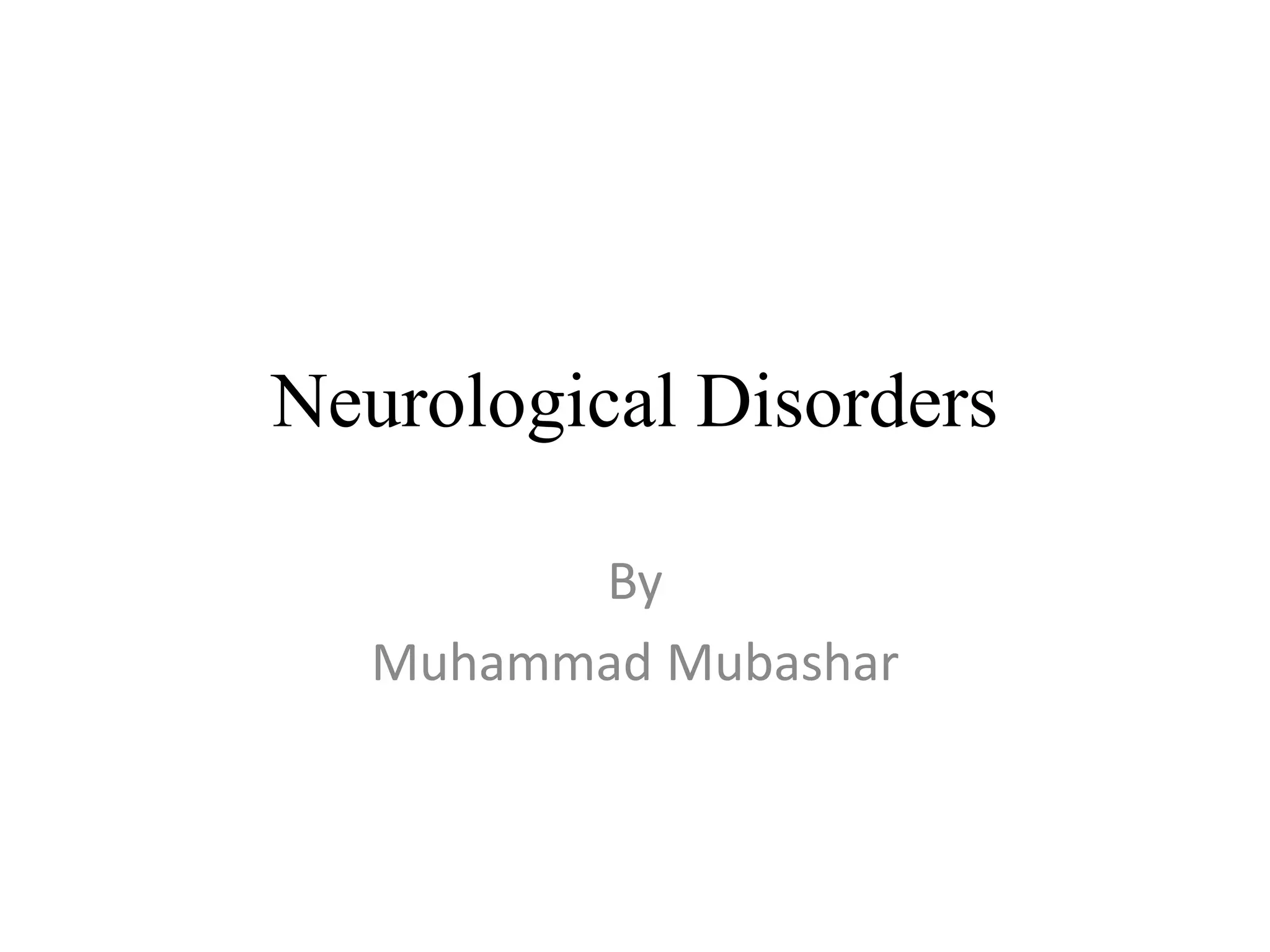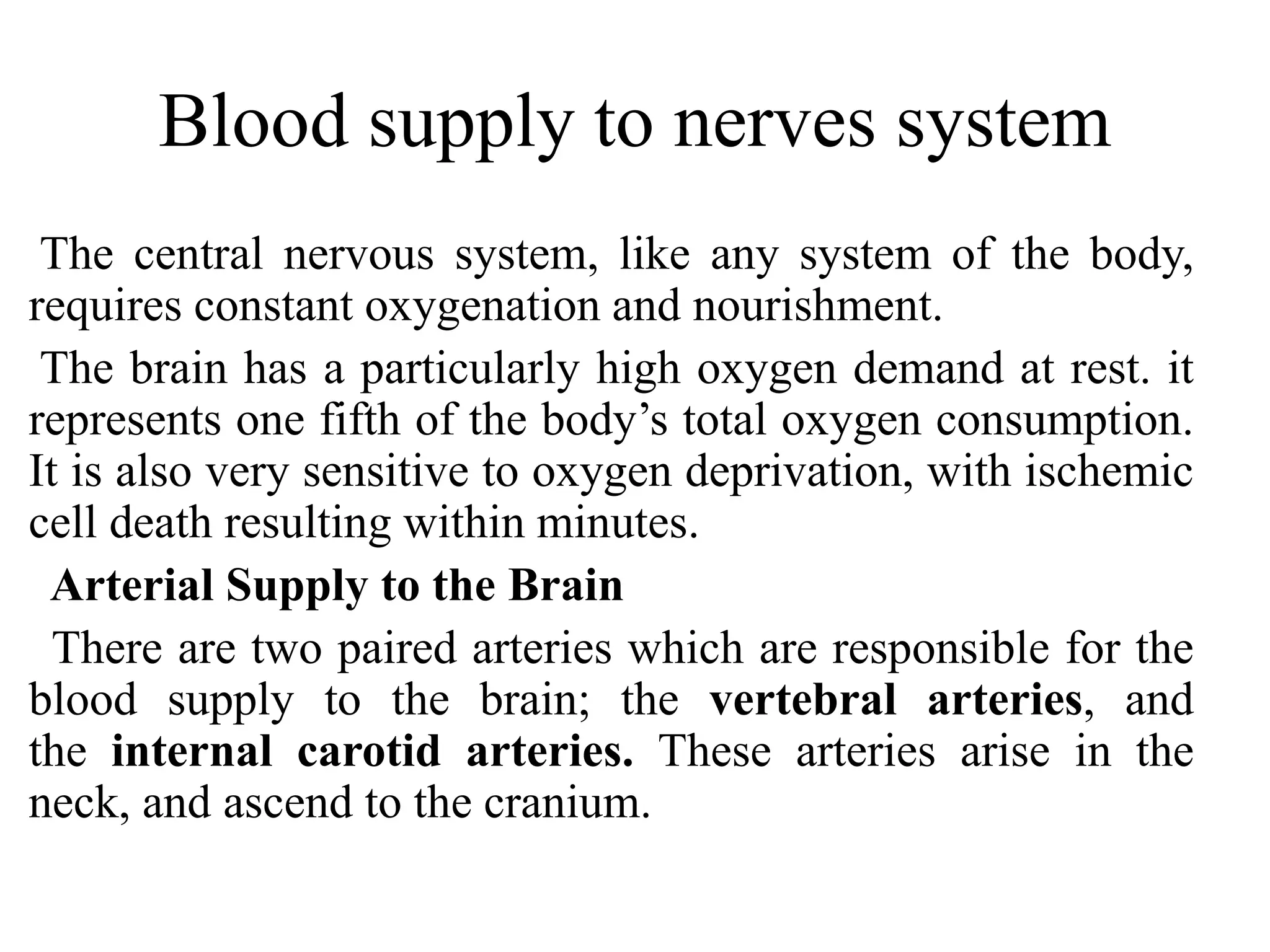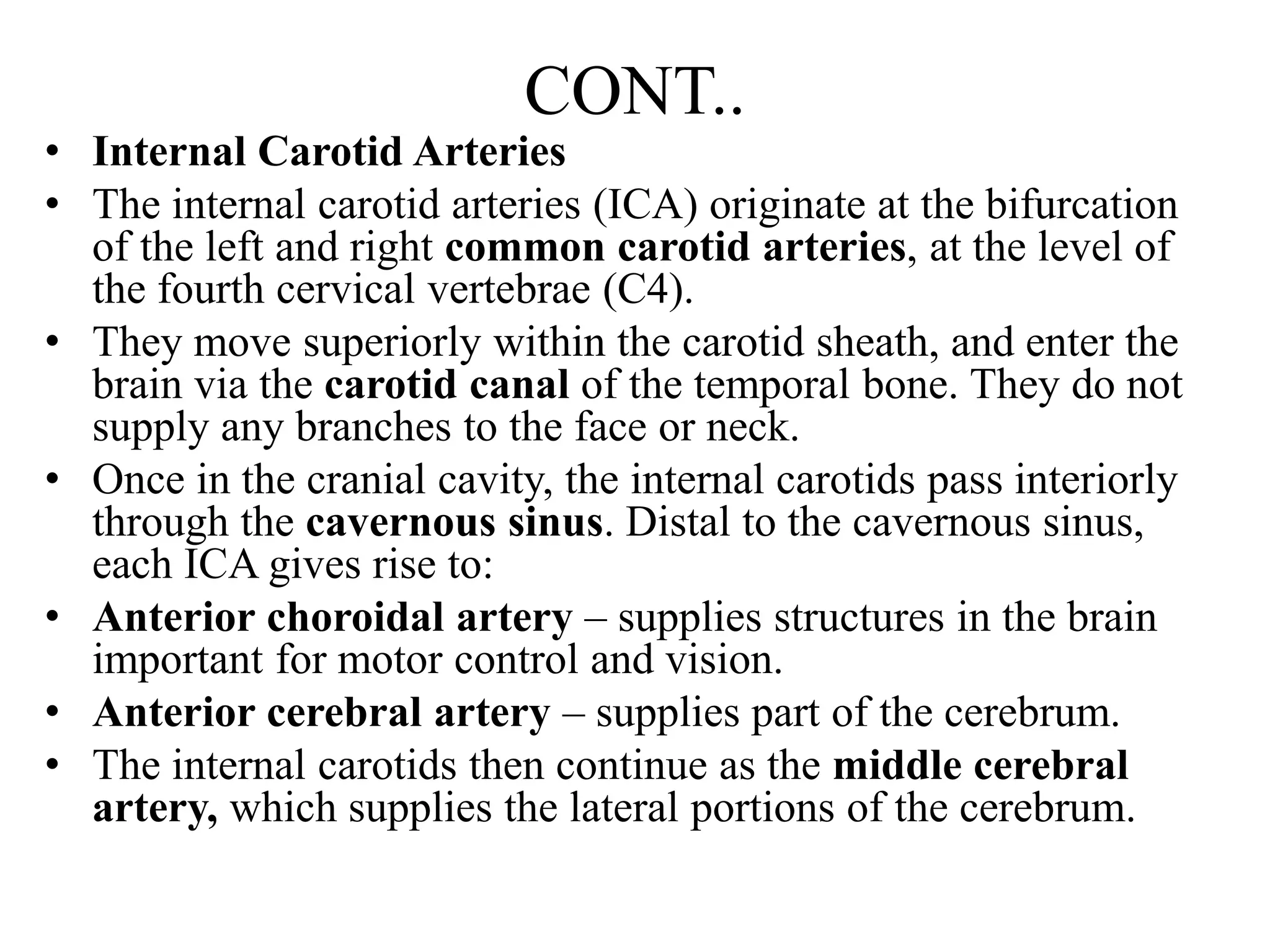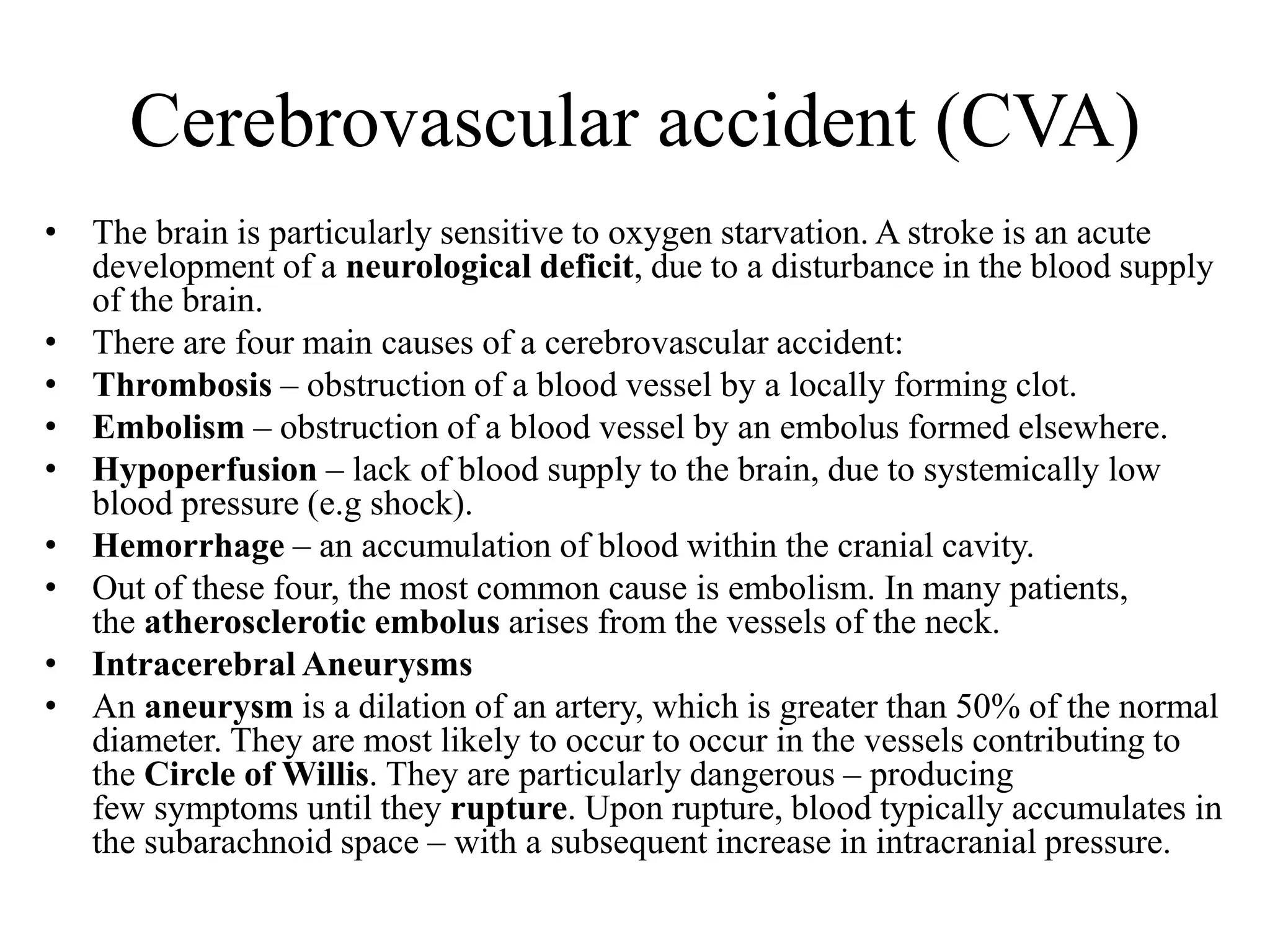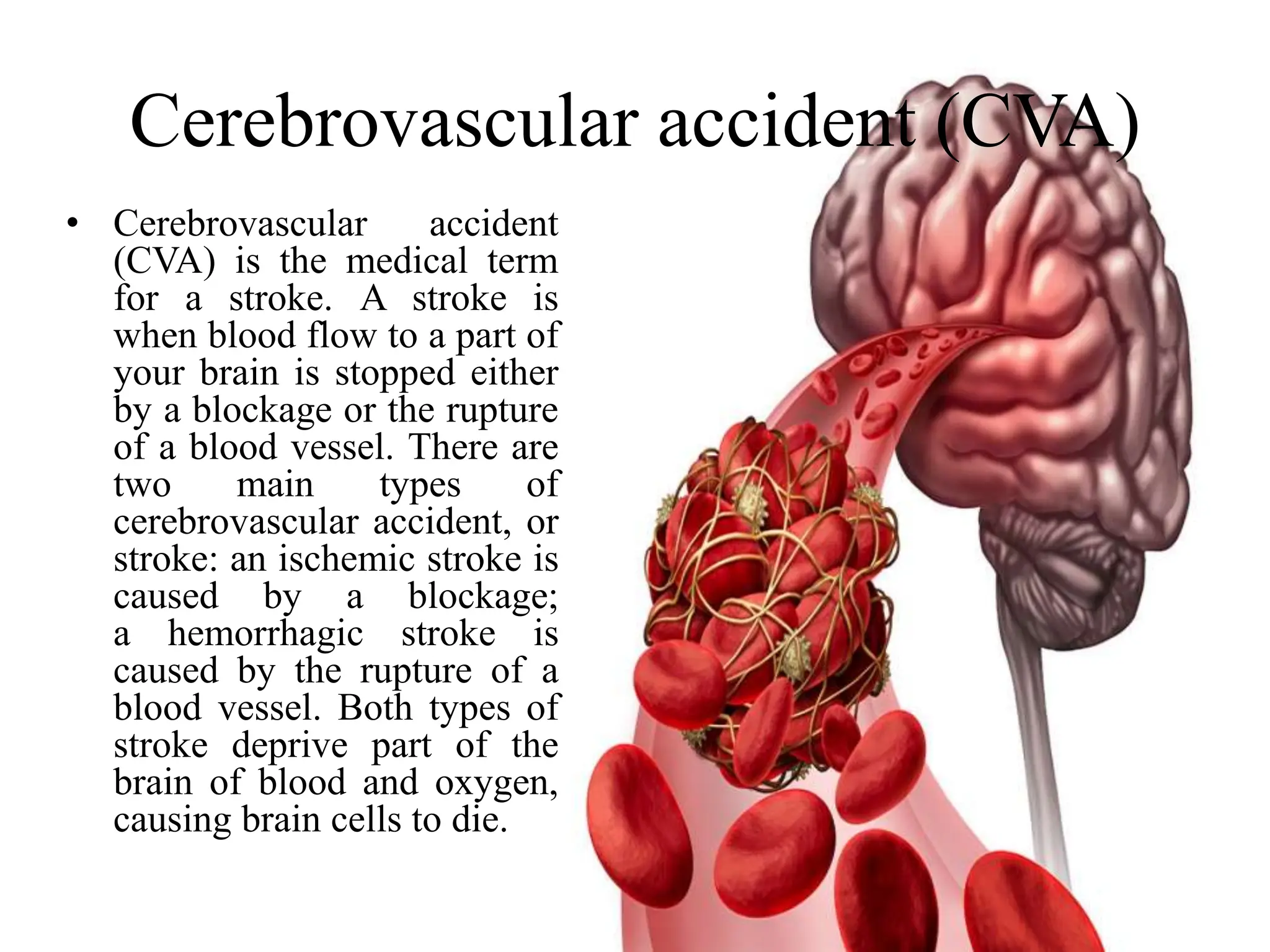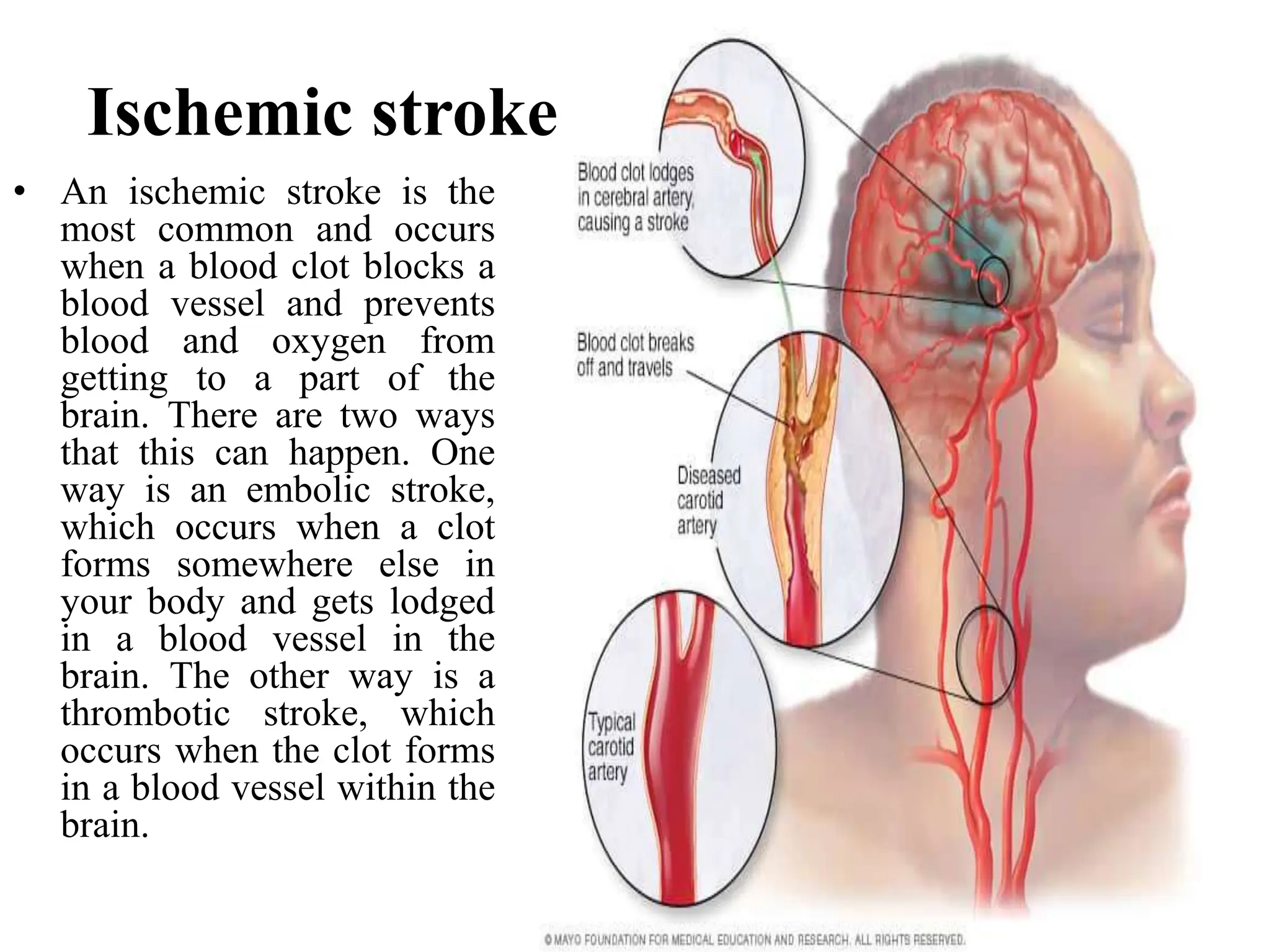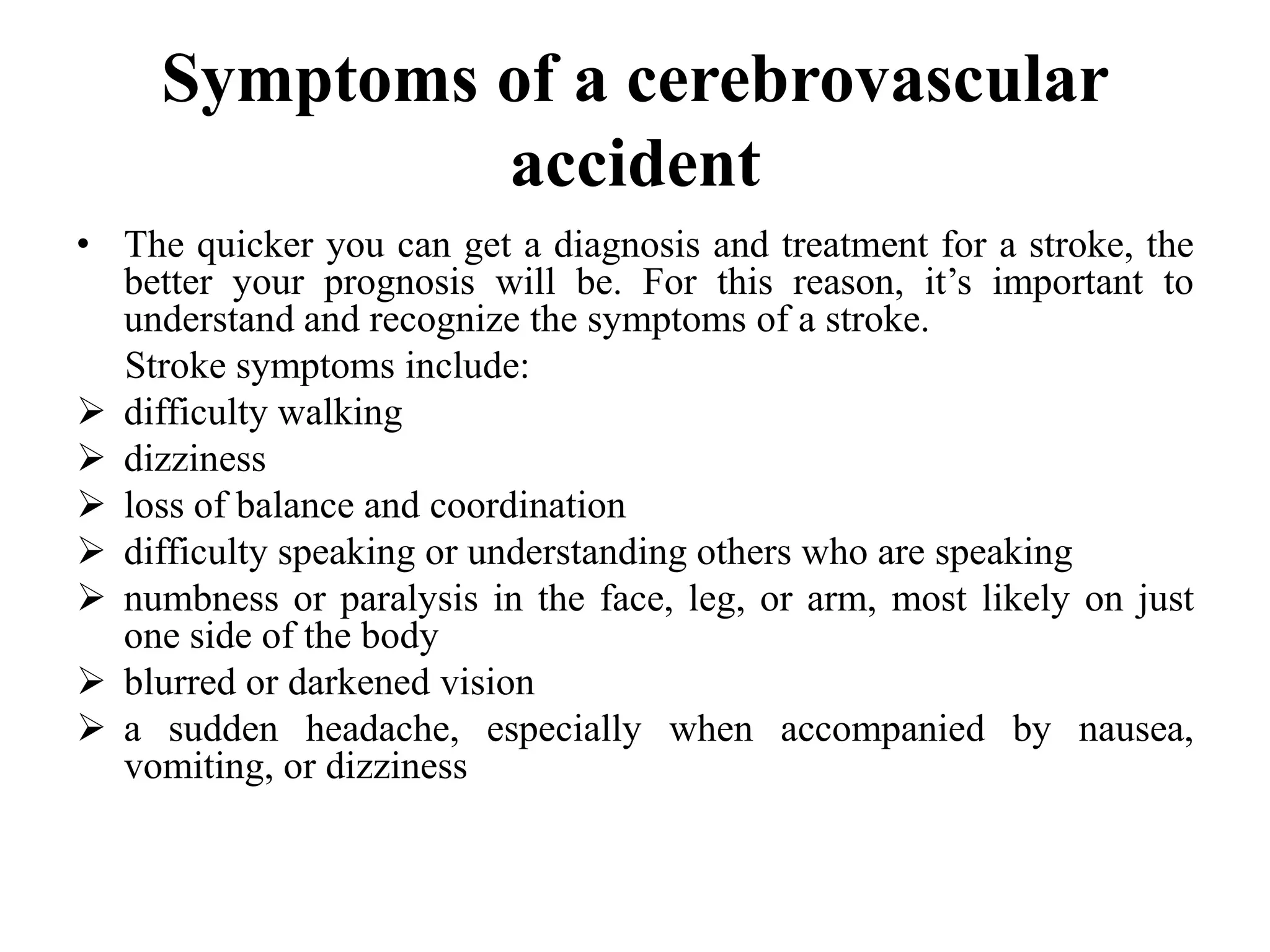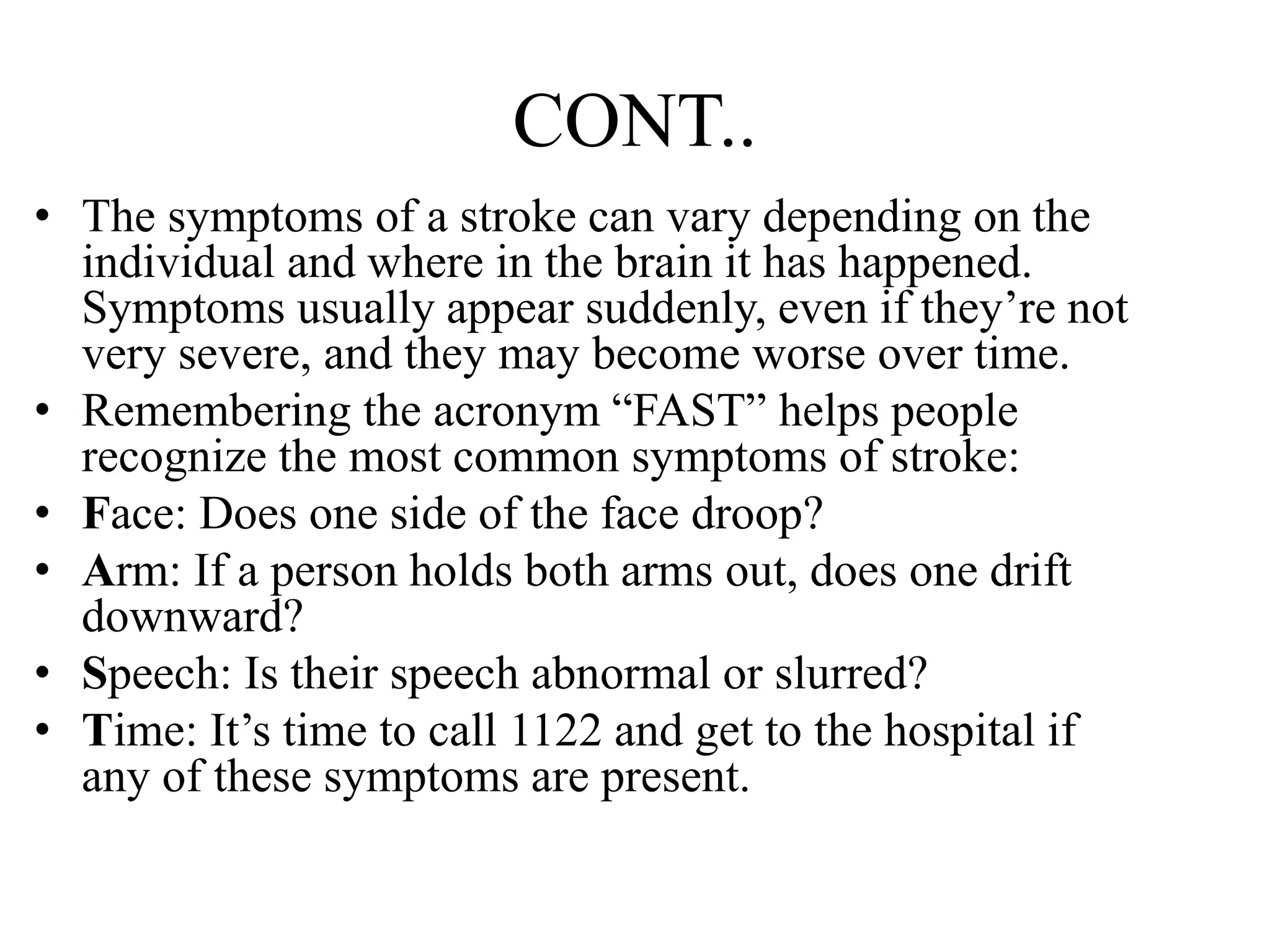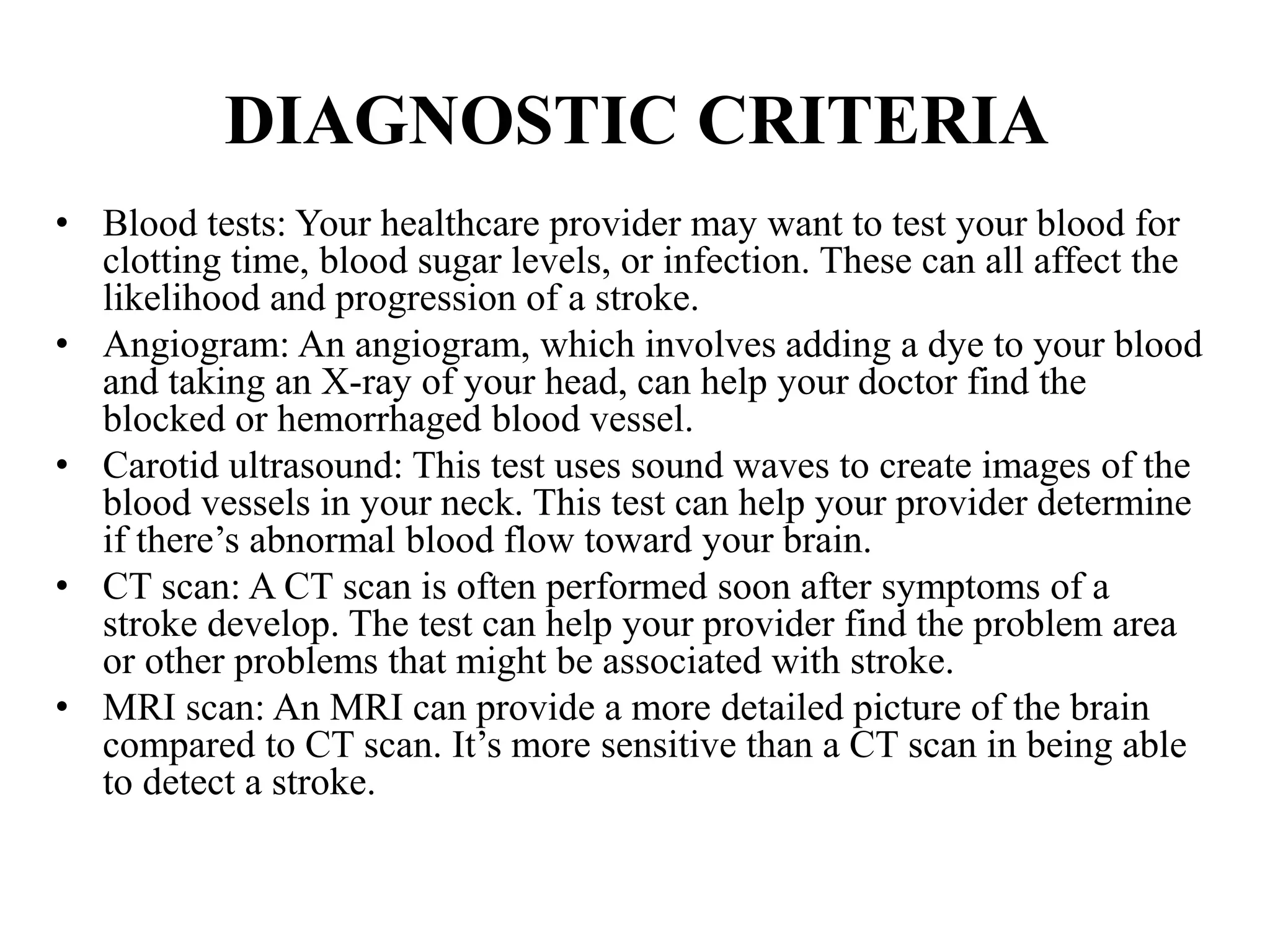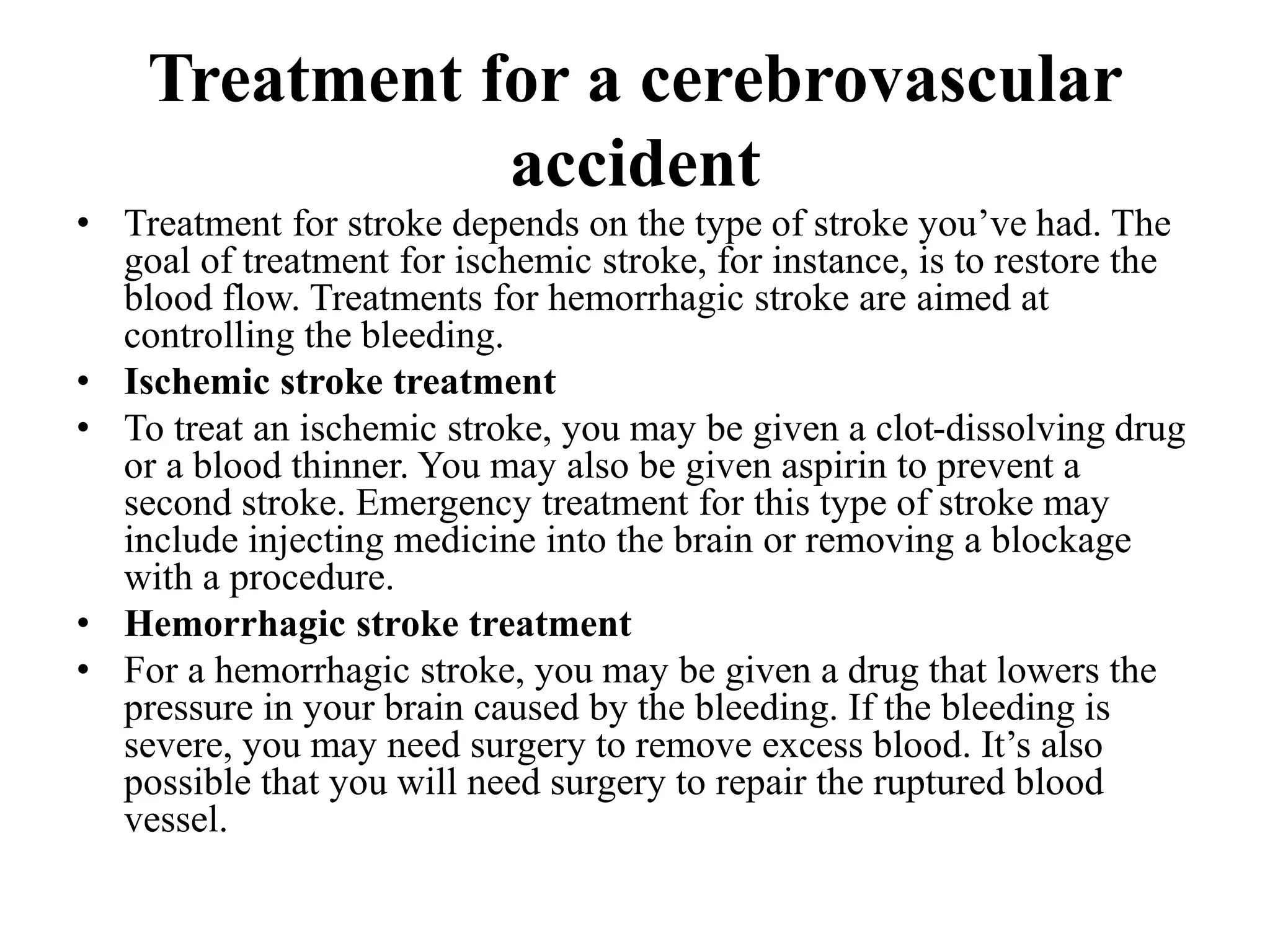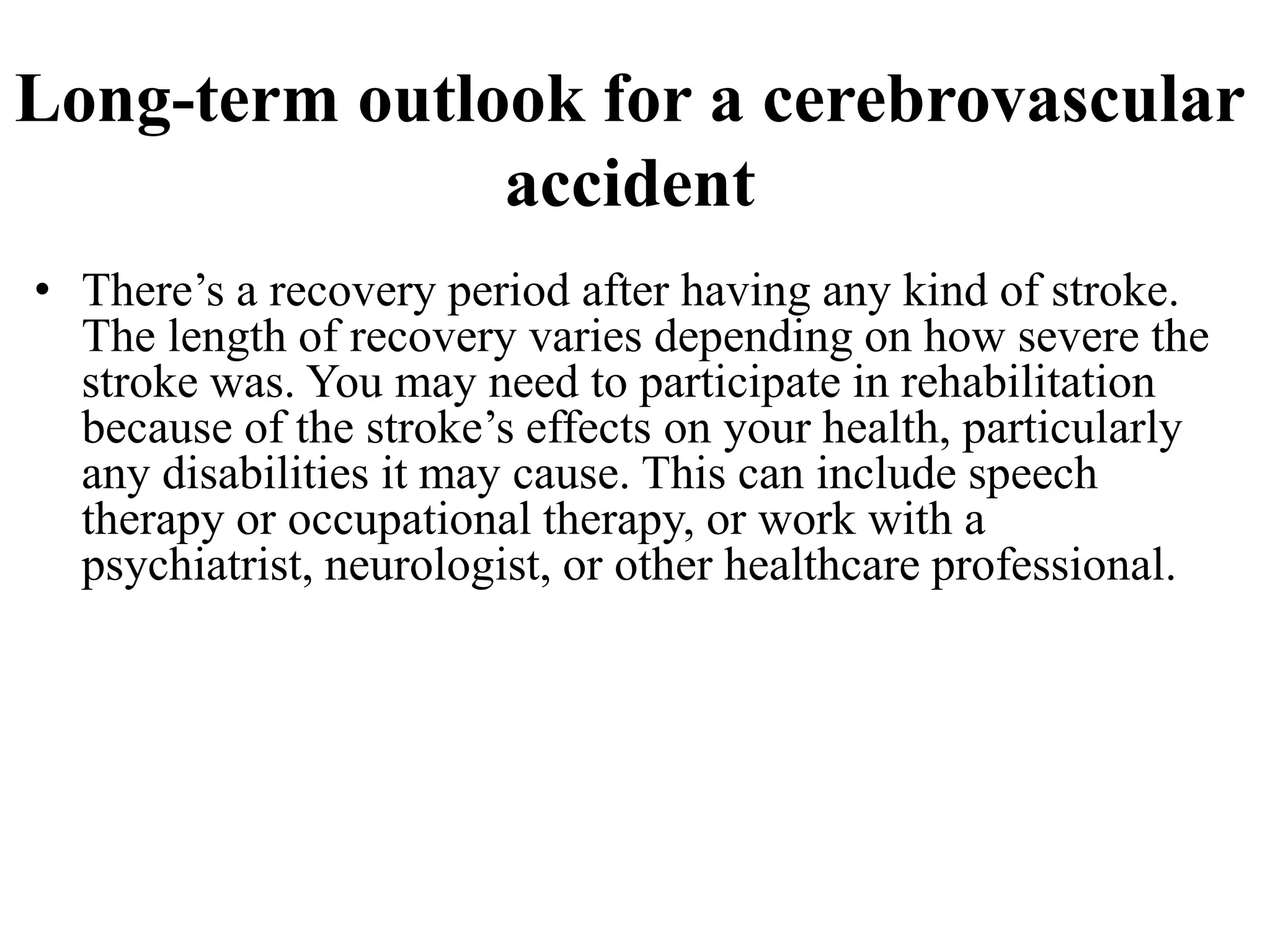The document discusses neurological disorders and provides details about cerebrovascular accidents (strokes). It describes the blood supply to the brain from arteries like the internal carotid and vertebral arteries. There are two main types of strokes - ischemic caused by blockage and hemorrhagic caused by bleeding. Symptoms can include weakness, difficulty speaking, and vision issues. Diagnosis involves scans and tests of the blood. Treatment depends on the type but may include clot-busting drugs or surgery. Lifestyle changes can help prevent strokes by maintaining healthy blood pressure and cholesterol levels.
